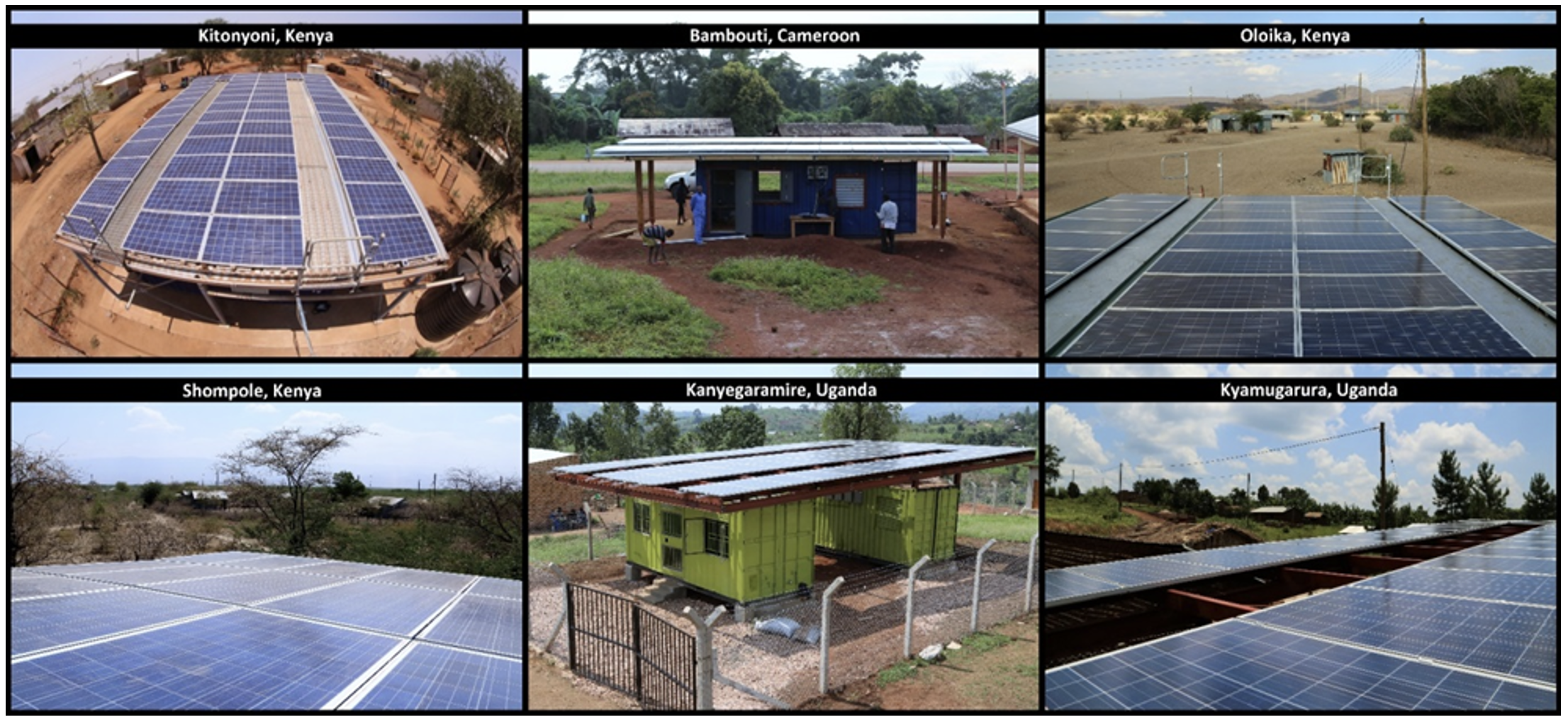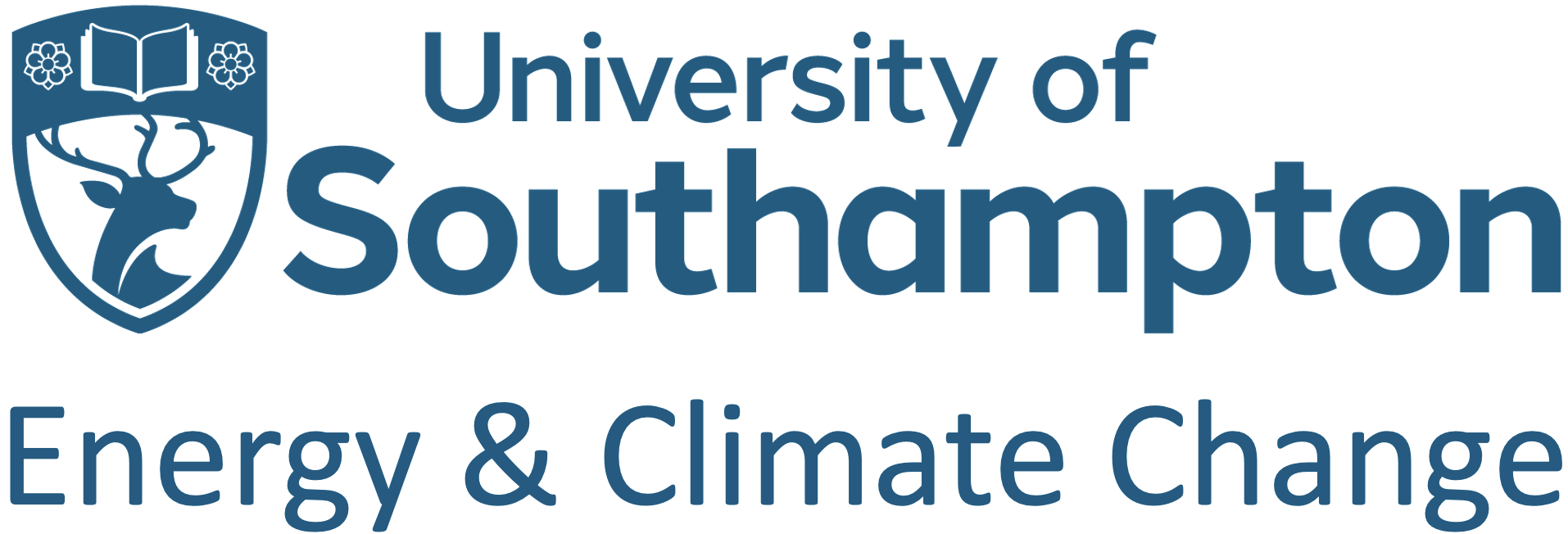Professor AbuBakr S. Bahaj
Energy and Climate Change Division, Sustainable Energy Research Group, (www.energy.soton.ac.uk)
School of Engineering, University of Southampton,
Boldrewood Innovation Campus, Building 178,
Southampton, SO16 7QF, UK
- Introduction
Net zero carbon is now the buzz word around the world with many countries clamouring to deliver on their declared targets to satisfy the Paris Climate Change Accord for limiting global temperature rise to 1.5 0C over this century and how this relates to emissions. This is a laudable cause, however, globally there are around 2.8 billion people without access to clean cooking and currently around 840 million people living without access to electricity, with hundreds of millions more only having very limited or unreliable electricity access [1]. So, in a way net zero is not really relevant to these people as they are at zero energy (hence zero carbon) and they are now more marginalised by the focus given to net zero. This article provides a brief outline on the issue of electricity access and provides some options on how this gap can be addressed through research and development embedded in evidence and exemplar projects.
The UN Sustainable Development Goals (SDGs) has one of its goals, SDG7, stating that by 2030 we must “ensure universal access to affordable, reliable, sustainable and modern energy services for all”. SDG7 address energy including electricity, which is crucial for achieving almost all of the SDGs, from eradicating poverty through advancements in health, education, water supply and industrialisation, to combating climate change.
The Sub-Saharan Africa (SSA) region contains around 600 million out of the 840 million people that are without access to electricity with most of them living in rural areas. The reason for this lack of access in that many of these people live in dispersed, remote communities far from the national grid. To provide access by extending the national grid to such remote and sparsely populated areas is very expensive. However, as we all recognise, access to reliable electricity transforms lives; provides opportunities for income generation, greater economic diversity, increases in productivity, creation of small businesses, access to education, health and clean water and other essential services. Electricity access is recognised as an enabler to lifting many of these people away from subsistence living.
- Technology for Electricity Access
There are mainly two options for providing electricity in the highlighted remote areas without extending national grids. A brief outline of these is given below.
2.1 Mini grids
A mini grid consists of a power plant, ideally renewable energy driven (now mostly driven by diesel generators) linked to a local mainly isolated network to distribute power to consumers. Mini grids, driven by renewable energy systems (some with hybridisation with diesel engines) offer the best economic approach to deliver electricity access in rural areas since as highlighted above national grid extension is very expensive to provide the needed electrical power. The power plant, distribution network and consumer connectivity constitute the mini grid. These are normally AC power supply systems but, in some cases, where the consumption footprint area is limited in size, DC mini grids can be used.
2.2 Solar home systems (SHS)
SHS are small solar photovoltaic (PV) power units ranging from 10 – 200 Watt based on one or two solar modules, battery storage and balance of system components. SHS are widely used as a less complicated solution for off-grid electrification mainly at the household/individual level – for lighting and other appliances, depending on requirements. It is estimated that about 180 million solar PV SHS units are currently in use in off-grid communities.
- Energy for Development (e4D) Programme
The Energy for Development (e4D) programme instigated by the author has the primary aim to provide pathfinders exemplar projects for electricity access in remote villages in SSA [2]. The drive behind the e4D programme and its projects is to target the improvement of living standards of the poor in communities in rural Africa and provide pathways for growth and development. It also has the aim of providing unbiased and needed evidence to governments and project developers of the need for action as well the challenges encountered in electricity access provisions.
The e4D concept, developed in early 2008, has at its core renewable energy power generation, distributed through a confined electrical distribution network mapped onto the village-trading centre footprint. The electrified centre with approximately 100 connections provides power supply to village activities supporting businesses, health centres, schools, places of worship, households needs for electrical charging of their appliances and as a nucleus for commercial activities growth.
To date, the e4D programme has implemented six rural electrification intervention projects as learning entities to support electricity access (Fig.1). In these projects, the power is generated through solar photovoltaics (PV) with battery storage, inverted to supply AC power to the village centres’ consumers through the mini grid network. The PV modules are held on a canopy over one or two containers, which in turn provide security of the modules, shading for the community and in some cases rainwater harvesting. The first project was installed in Kenya in 2012 and the others installed around 2015 in Cameroon, Kenya and Uganda (Fig.1). Funding for the first project (Kitonyoni) was through a grant whilst the others were in collaboration with the Kenyan and Ugandan Governments. These projects are continuously monitored by the e4D team of the Energy and Climate Change Division at the University of Southampton.

Fig.1 Six container-based PV driven mini grids deployed under the Energy for Development (e4D) programme in Kenya, Uganda and Cameroon. Further details can be seen at www.energyfordevelopment.net.
It is important to recognise that such systems, which are installed in very remote areas, will require management and technical support infrastructure. To this end, all the projects are run through locally created cooperatives with structures developed by the e4D team, conforming to each country’s legal requirements. The cooperatives manage the projects including the collection of money from power consumers, maintaining the project and addressing its expansion needs. Technical as well as management training is provided by the e4D team during the initial site surveys and inception phases of the projects [3,4].
Mini grids require large initial capital cost for both the power plant, the electrical network and consumer connections. This inherently creates a tension on tariffs, especially when applied to the rural poor with very low income; and how the level of tariff charged can be balanced by the need for commercial project developers to have a quick return on investment. Nevertheless, the e4D technical concept is now accepted by intervention countries and is now established as the best option to provide just electricity access. It is also been copied by some mini grid developers as it provides the best approach for power generation in remote areas and solar-rich resource countries in Africa. However, in most commercial projects the tariff is now normally capped by the countries’ regulators.
- Conclusions
I hope this article demonstrated that in addition to addressing net zero, our global focus should also address access to energy and here I have concentrated on electricity access. This is particularly important in a world experiencing a pandemic, which is creating enormous pressure on societies and their economies. Mapping this additional burden to developing countries is heart breaking since many people lack the resources to cope with the challenges presented by COVID-19. In particular, the measures needed to stem the spread of the coronavirus namely, social distancing and staying home, access to clean water, oxygen etc are based on the assumption that these people will have access to reliable and affordable electricity. Hence electricity access will facilitate such necessary provisions, as well as to stay connected to each other and their families and generally have access to essential services such as electrified health centres.
COVID-19 (on top of the needed development) will intensify the urgency for solutions as recently emphasised by Bill Gates [5]. In my view, such solutions should be based on mini grids and solar home systems to provide universal access to electricity at affordable tariffs. Governments, funding agencies – EU, World Bank, development banks and aid providers – should speed up investment in electricity access infrastructure in SSA and elsewhere. Their current funding processes are long and ridden with bureaucracy, which will definitely exasperate the impact of the pandemic on an already stressed population. Establishing speedy and nimble electricity access projects will undoubtedly alleviate current and future pressures on such communities; as mini grids and solar home systems offer the cheapest solutions (when compared to extending the national grid). Such systems will undoubtedly impact and change lives through access to health, clean water and educational services as well as for productive use of energy, in off grid, isolated and rural communities in Africa.
Acknowledgment
This work is part of the activities of the Energy and Climate Change Division and the Sustainable Energy Research Group at the University of Southampton (www.energy.soton.ac.uk). The work was also supported by the EPSRC under grant EP/G06394X/1, “Replication of Rural Decentralised off-grid Electricity Generation through Technology and Business Innovation”, the International Centre for Infrastructure Futures (ICIF) (EP/K012347/1), British Council UK Newton Fund (NF) Institutional Links (Grant No. 261850721), Fortis Unum: Clustering Mini-Grid Networks to Widen Energy Access and Enhance Utility Network Resilience (EP/R030391/1) and Demand Side Renewables for Agricultural Base Load Energy (DeSiRABLE) Innovate UK Project number 40582. The author would like to thank the entire e4D research team who have helped to make these mini grid systems happen.
References
- https://www.seforall.org/publications/tracking-sdg7
- https://www.energy.soton.ac.uk/category/research/energy-for-development/
- Bahaj, A.S. et al (2019) The Impact of an Electrical Mini-grid on the Development of a Rural Community in Kenya, Energies, 12(5), 778.
- Bahaj, A. S. and James, P. A. B., 2019 Electrical mini-grids for development: Lessons from the field, in Proceedings of the IEEE, Vol. 107, no. 9, pp. 1967-1980.
- https://www.geekwire.com/2020/bill-gates-warns-coronavirus-impact-dramatic-globally/
